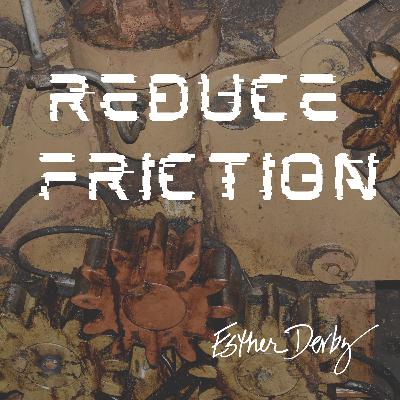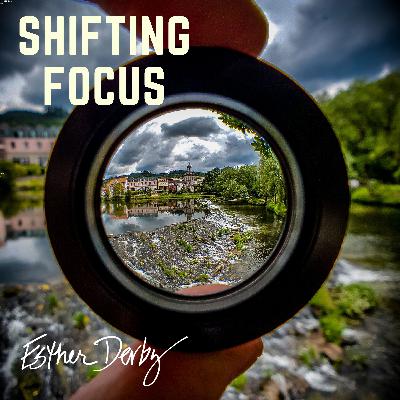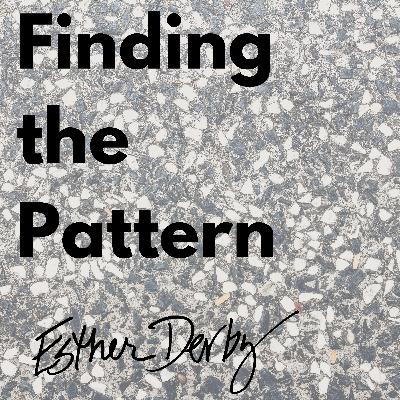Discover Change by Attraction
Change by Attraction

Change by Attraction
Author: Esther Derby
Subscribed: 44Played: 785Subscribe
Share
© 2020-2023 Esther Derby
Description
Join Esther Derby, author of 7 Rules for Positive Productive Change: Micro Shifts, Macro Results for Change by Attraction--because you don't have to push, prod, persuade or punish people to create change in your organization.
This podcast is for people who want to bring change to their team, department, or organization-- whether or not they have change management in their job title.
Listen strategies, stories of success, and stories of mess. I'll talk about what makes change possible in modern organizations. You’ll gain insights and inspiration you can use.
Check in on the last Wednesday of every other month for new episodes. I've got several intense projects going on, so I'm switching to bi-monthly for a while.
Join my online course Change by Attraction to hone your ability to catalyze change. https://estherderby.teachable.com/p/change-by-attraction-live
This podcast is for people who want to bring change to their team, department, or organization-- whether or not they have change management in their job title.
Listen strategies, stories of success, and stories of mess. I'll talk about what makes change possible in modern organizations. You’ll gain insights and inspiration you can use.
Check in on the last Wednesday of every other month for new episodes. I've got several intense projects going on, so I'm switching to bi-monthly for a while.
Join my online course Change by Attraction to hone your ability to catalyze change. https://estherderby.teachable.com/p/change-by-attraction-live
32 Episodes
Reverse
It is not always easy to speak up in organizations. People may think twice before brining up ideas, issues, risks, concerns. They may wonder, Will the boss take it the wrong way? Will I get picked to pieces in public? Does the manager only listen to senior people? If the answer to any of those questions is “Yes,” the organization is going to miss out on useful information.In this podcast, I discuss the importance of voice and three things that you can do—form a position of formal or informal power—to make it easier for people to speak up.
Visit my website www.estherderby.com. Sign up for my newsletter to receive information about workshops, online classes, and more.7 Rules for Positive Productive Change is available on Barnes and Noble, Amazon, or from the publisher.
When leaders decided to make a change, they hope it will improve performance. But, while it may do so, there’s almost always a dip. Maybe a small dip, but sometimes a large one. When that happens, the first impulse is to make another change. And then you’ve got churn.Sorry this episode is late! I had a bad cold and wasn't up to recording.
Visit my website www.estherderby.com. Sign up for my newsletter to receive information about workshops, online classes, and more.7 Rules for Positive Productive Change is available on Barnes and Noble, Amazon, or from the publisher.
Why don’t ppl want to change? I hear this question a lot. The assumption behind the question is clear: the impediments to change exist within people. But there's often friction in the context....situations that counter-motivate change. I find it more useful to ask: "How to reduce the friction for people to change?"I'll talk about some of the sources of friction, and what you can do about them, in this episode.For more on the adoption of antiseptic practices (ad other really interesting ideas about change, see Slow Ideas, by Atul Gawande.
Visit my website www.estherderby.com. Sign up for my newsletter to receive information about workshops, online classes, and more.7 Rules for Positive Productive Change is available on Barnes and Noble, Amazon, or from the publisher.
Blame shuts down problem-solving. Curiosity leads to greater insight. But the response to problems is often the former.
Visit my website www.estherderby.com. Sign up for my newsletter to receive information about workshops, online classes, and more.7 Rules for Positive Productive Change is available on Barnes and Noble, Amazon, or from the publisher.
You may think someone else needs to change. But approaching that topic is a delicate matter. If they haven't invited your input, your advice is likely to cause a rupture, especially when hierarchy is involved.
Visit my website www.estherderby.com. Sign up for my newsletter to receive information about workshops, online classes, and more.7 Rules for Positive Productive Change is available on Barnes and Noble, Amazon, or from the publisher.
Changing the paradigms—beliefs and assumptions about how things work—can be powerful in changing systems. But how can you do that? Sometimes it as simple as shifting what people focus on. If you are interested in learning more about the SEEM model, drop me an email and I'll send you a copy of the paper where I first published it. esther at estherderby dot com.
Visit my website www.estherderby.com. Sign up for my newsletter to receive information about workshops, online classes, and more.7 Rules for Positive Productive Change is available on Barnes and Noble, Amazon, or from the publisher.
Systems reflect the beliefs and assumptions of the ppl & societies who create them. Changing those beliefs is a powerful way to change a system. So, it follows, if we want to change management, we need to look at the beliefs and assumptions behind the dominant system of management. Donella Meadow's Leverage Points: Places to Intervene in a System
Visit my website www.estherderby.com. Sign up for my newsletter to receive information about workshops, online classes, and more.7 Rules for Positive Productive Change is available on Barnes and Noble, Amazon, or from the publisher.
Even when you have a big idea, you get there with little steps. This isn’t always satisfying to people who are in a hurry. It is understandable that people want big results and want them fast. But it doesn’t work that way. You have to cross the zone.
Visit my website www.estherderby.com. Sign up for my newsletter to receive information about workshops, online classes, and more.7 Rules for Positive Productive Change is available on Barnes and Noble, Amazon, or from the publisher.
There are a handful of things, that if you manage to shift them, you can start a cascade of goodness in your organization. Trust is one of them.
Visit my website www.estherderby.com. Sign up for my newsletter to receive information about workshops, online classes, and more.7 Rules for Positive Productive Change is available on Barnes and Noble, Amazon, or from the publisher.
In the course of observing, leading, and participating in many organizational changes, I’m discovering how to nurture change… in ways that are more effect than many of the prevalent methods.Related: https://www.estherderby.com/the-forest-succession-principle/
Visit my website www.estherderby.com. Sign up for my newsletter to receive information about workshops, online classes, and more.7 Rules for Positive Productive Change is available on Barnes and Noble, Amazon, or from the publisher.
We experience and respond to events—what’s in front of us now. But often, if we want to change events, we need to take a longer view and see patterns and system dynamics.
Visit my website www.estherderby.com. Sign up for my newsletter to receive information about workshops, online classes, and more.7 Rules for Positive Productive Change is available on Barnes and Noble, Amazon, or from the publisher.
I talk a lot on this podcast about tiny changes, changing systems and creating environments where something new might emerge. But that involves working with other people. How you show up as a change artist makes a difference. So in this episode, I’m going to talk about use of self—how showing up, empathizing, and connecting matters.
Visit my website www.estherderby.com. Sign up for my newsletter to receive information about workshops, online classes, and more.7 Rules for Positive Productive Change is available on Barnes and Noble, Amazon, or from the publisher.
We’re trained to think big, to go for that big hairy audacious goals, to go big or go home. But when it comes to making complex changes in your organization, tiny may be the way to go.Explore more about micro shifts:Steering Signalshttps://changebyattraction.simplecast.com/episodes/steering-signalsFour Questions for Evaluating Experiments https://www.estherderby.com/4-questions-for-evaluating-experiments/Change Artist Super Powers: Experimentation https://www.estherderby.com/change-artist-super-powers-experimentation/
Visit my website www.estherderby.com. Sign up for my newsletter to receive information about workshops, online classes, and more.7 Rules for Positive Productive Change is available on Barnes and Noble, Amazon, or from the publisher.
Adaptive Capacity is the ability to respond to change—whether that change is an adverse market event, a fabulous opportunity, or learning from experience. Unfortunately, many organizational habits sap adaptive capacity.
Visit my website www.estherderby.com. Sign up for my newsletter to receive information about workshops, online classes, and more.7 Rules for Positive Productive Change is available on Barnes and Noble, Amazon, or from the publisher.
Usually, I talk about how to nurture change, once you are already in a position to do that. In this episode, I’m going to talk about contracting. Because contracting can make the difference between a successful engagement and a disappointing one—whether you are an employee or an external consultant or coach. Contracting sets the tone.
Visit my website www.estherderby.com. Sign up for my newsletter to receive information about workshops, online classes, and more.7 Rules for Positive Productive Change is available on Barnes and Noble, Amazon, or from the publisher.
What the organization came from and what it is like now, influence where it can go. Organizations don’t leap forward toward some abstract potential. They shimmy and mosey to the next best thing they are capable of—based on what is and what has been. In this episode I’ll share two of the things I try to learn about when I enter a new organization to understand where they come from: the latest change, and the persistent stories.I mention the SEEM model, one of the lenses I use to understand what I’m seeing in organizations. You can download an introduction to the SEEM model here.
Visit my website www.estherderby.com. Sign up for my newsletter to receive information about workshops, online classes, and more.7 Rules for Positive Productive Change is available on Barnes and Noble, Amazon, or from the publisher.
I recently had a fascinating conversation with Matthew Carlson, a senior consultant at Industrial Logic. We talked about what is different about adopting agile methods in 2021 vs. 2001… and how those differences play out for the people who work in organizations and those who hope to help them adopt agile methods. Join me and special guest Matthew Carlson for a rich conversation about considering context and respecting the structures and pressures that shape the adoption of not-so-new-innovations. Read more about Matthew here: https://www.industriallogic.com/people/matthew/
Visit my website www.estherderby.com. Sign up for my newsletter to receive information about workshops, online classes, and more.7 Rules for Positive Productive Change is available on Barnes and Noble, Amazon, or from the publisher.
Some people think that empathy has no place at work…that work requires hard-nosed logic and checking your emotions at the door. They believe empathy means never hurting anyone’s feelings. But empathy doesn’t mean you have to coddle people or feel the same way they do. It means acknowledging other’s feelings, thoughts and view are valid, whether you agree with them or not. Most importantly, empathy smooths the road to forward movement and problem-solving.
Visit my website www.estherderby.com. Sign up for my newsletter to receive information about workshops, online classes, and more.7 Rules for Positive Productive Change is available on Barnes and Noble, Amazon, or from the publisher.
When making a change or fixing a problem, most companies consider the outcome they want to achieve—what will be different—and how they’ll measure that. But outcomes can take a long time. In the meanwhile, how do you know things are going the way you hoped? How do you make adjustments if needed? That’s where steering signals come in. Interim measures and subtle signs that help you find the way.
Visit my website www.estherderby.com. Sign up for my newsletter to receive information about workshops, online classes, and more.7 Rules for Positive Productive Change is available on Barnes and Noble, Amazon, or from the publisher.
When you listen, you convey that the other person has something valuable to share—which helps equalize status. If your response indicates you understand the clients world, their confidence in your ability to help grows.
Visit my website www.estherderby.com. Sign up for my newsletter to receive information about workshops, online classes, and more.7 Rules for Positive Productive Change is available on Barnes and Noble, Amazon, or from the publisher.
























